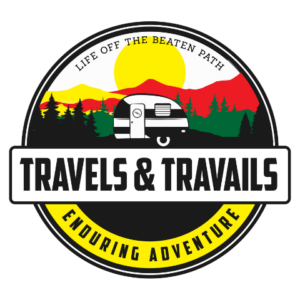A couple of years ago, we were camping in the Escalante Grand Staircase area. I wanted to see the slot canyons, but we couldn’t take the dog. I left my husband behind with the dog and headed out. Then I got lost…
If you’ve ever gotten yourself in a bind while camping, you know how important it is to travel with the appropriate safety gear. This probably has you asking, “What is the best safety equipment for camping?”
Here is a list of camping safety gear that you should consider bringing on your next camping trip:
- First aid kit
- Emergency whistle
- Headlamp or flashlight with extra batteries
- Multi-tool or knife
- Waterproof matches or lighter
- Map and compass
- Sunscreen with a high SPF
- Insect repellent
- Bear spray (if camping in bear country)
- Water filter or purification tablets
- Emergency blanket
- Firestarter (such as firestarter cubes or a magnesium fire starter)
- Personal locator beacon (PLB) or satellite messenger device
- Rain gear (such as a rain jacket and pants)
- Thermal clothing (such as a warm hat and gloves)
- Navigation app on your phone or GPS device
- Emergency shelter (such as a bivy sack or tarp)
- Flares or signal mirror (for emergency signaling)
- Portable charger or extra batteries for electronic devices.
In this blog post, we will discuss the must-have safety gear for camping that will help you feel confident and secure on your next camping trip.
Personal Safety Gear
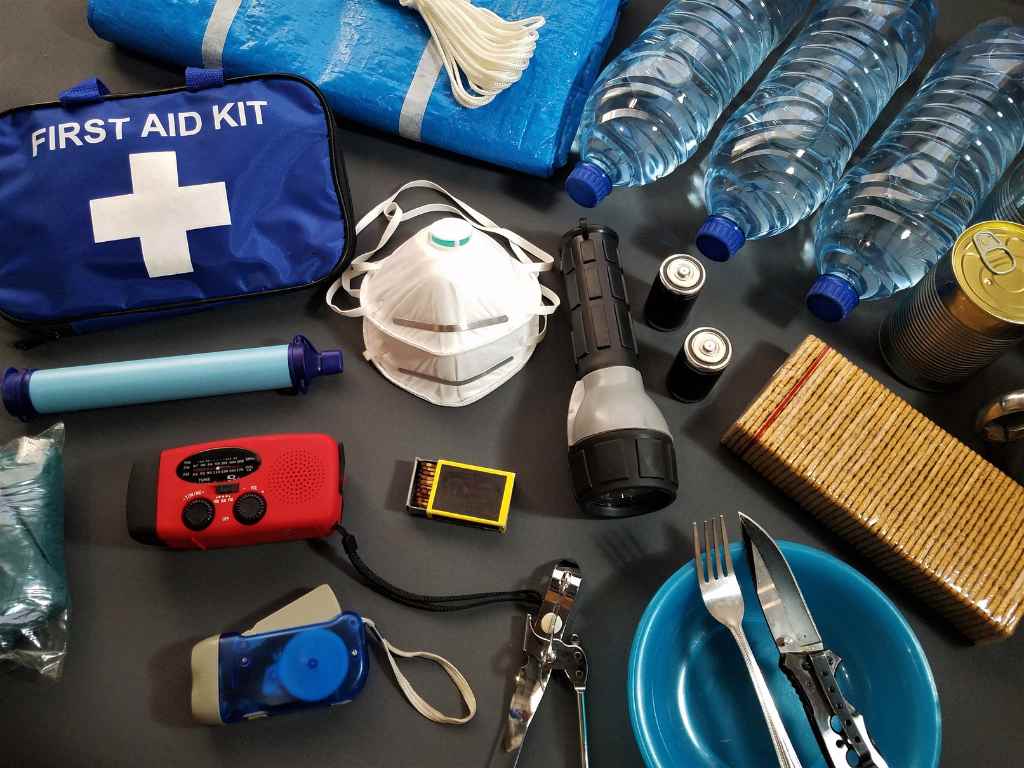
Having personal safety gear when camping is very important because it can help prevent accidents and provide essential assistance during emergencies.
Camping usually involves being far from medical help. Unexpected situations like harsh weather, encounters with wildlife, or accidents can happen without warning. By having personal protective equipment on hand, you can greatly improve your ability to handle these situations with confidence and effectiveness.
First Aid Kit
Camping activities such as hiking, fishing, or cooking over a campfire can lead to cuts, scrapes, burns, or insect bites. In addition, outdoor activities can exacerbate pre-existing conditions such as allergies, asthma, or chronic illnesses.
A first aid kit provides the tools necessary to treat these injuries and illnesses until more advanced medical help is available.
When you’re in the great outdoors, you are often far from medical assistance, and accidents can happen at any time. Having a well-stocked first aid kit on hand can help you treat injuries and prevent them from becoming more serious.
There are many first-aid kits on the market. I bought ours and then added the things that we might normally need, like medications.
If you’d like to put one together yourself, here are some essential items to include in your camping first aid kit:
Essentials
- First aid manual
- Emergency contact information
- Personal medication
Wound Care
- Adhesive bandages (various sizes)
- Sterile gauze pads
- Medical adhesive tape
- Antiseptic wipes
- Antibiotic ointment
- Hydrogen peroxide or rubbing alcohol
- Disposable gloves
Tools and Equipment
- Scissors
- Tweezers
- Thermometer
- Flashlight
- Emergency blanket
- Safety pins
- Cotton swabs
Medications
- Acetaminophen or ibuprofen
- Antihistamines
- Antidiarrheal medication
- Antacids for heartburn and indigestion
- EpiPen (epinephrine auto-injector) for severe allergic reactions (Talk to your doctor)
- Antifungal cream for skin infections such as athlete’s foot
- Hydrocortisone cream for skin inflammation and itching
- Nasal decongestants for colds and allergies
- Oral rehydration salts for treating dehydration
- Pain-relieving gel or cream such as lidocaine or benzocaine
- Saline solution for flushing eyes or wounds
Other
- Insect repellent
- Sunscreen
- Aloe vera gel
- Burn ointment
- Eye drops
- Poison ivy/oak cream or cleanser
Having a well-stocked first aid kit is essential for camping safety, but it’s also important to have the knowledge and skills to use it effectively. That’s why first aid training is an important aspect of camping safety.
The Importance of First Aid Training for Camping
By taking a first aid course, you’ll learn how to assess a situation quickly and take the necessary steps to provide appropriate care. This can be crucial in a camping emergency, where professional medical help may be far away. First aid training can make all the difference in saving a life or preventing a minor injury from becoming a major one.
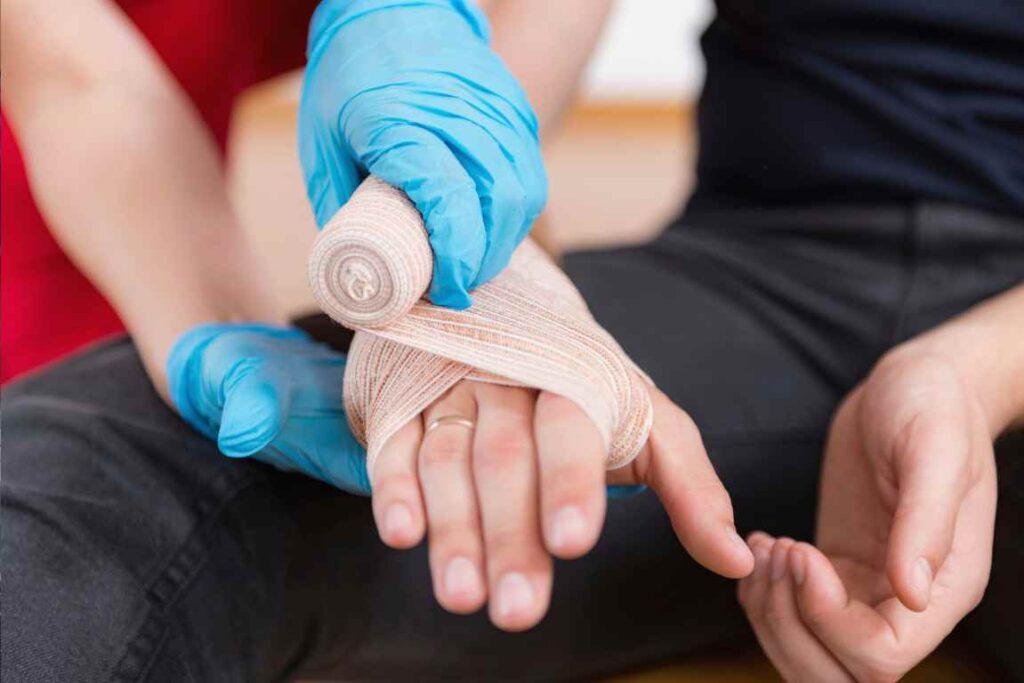
Preventing Accidents and Injuries in the First Place
In addition to providing you with the skills to handle medical emergencies, first aid training can also help you prevent accidents and injuries in the first place. You’ll learn about safety principles and risk management strategies that can help you identify and avoid potential hazards.
Choosing the Right First Aid Course for Camping
There are a variety of first aid courses available, ranging from basic courses that cover the essentials of first aid to more advanced courses that cover specialized topics such as wilderness first aid. It’s important to choose a course that meets your needs and the needs of your camping group.
We do quite a bit of backcountry camping and overlanding. For that reason, I took the wilderness first aid course. If you’re camping with young children, a pediatric first aid course may be more appropriate.
In addition to first aid training, I also have completed CPR training. You never know when you’ll need it.
Emergency Gear
If you get lost, injured, or encounter severe weather, emergency gear can save your life.
Headlamp or Flashlight
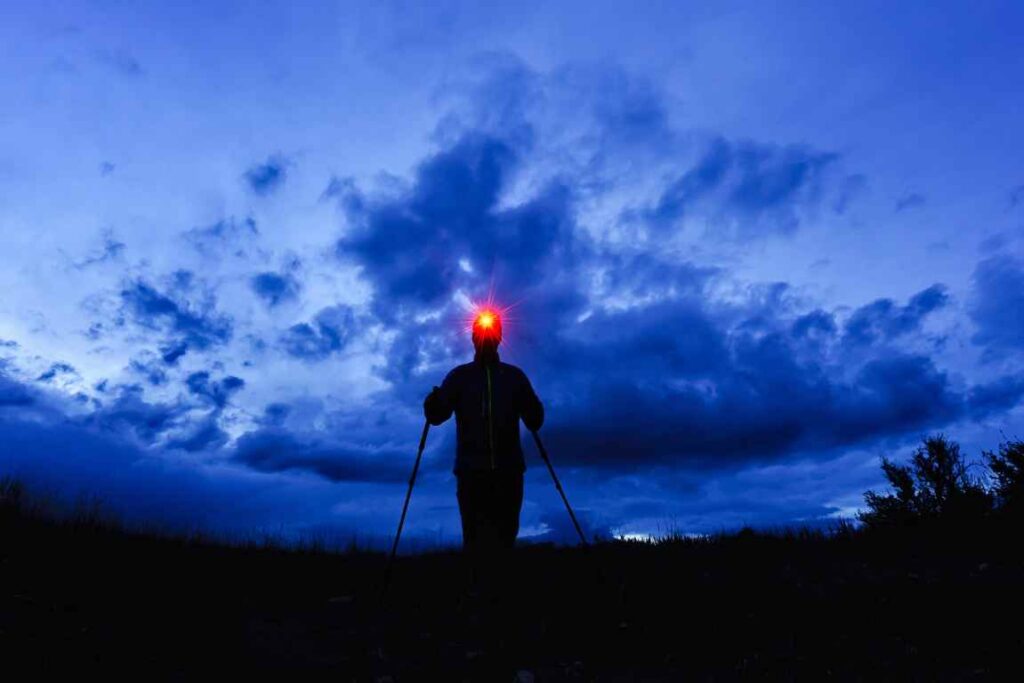
Good visibility at night prevents accidents and increases your sense of safety. A headlamp or flashlight is essential for providing visibility in the dark.
A headlamp or flashlight can help you navigate through unfamiliar terrain, set up your campsite, and perform tasks like cooking or reading.
It also allows you to move around safely without the risk of tripping over obstacles or losing your way. And it can help you identify potential hazards like snakes, rocks, or roots.
I can’t tell you how many times I have stubbed my toe or walked into one of those campsite bollards because I forgot my headlamp or flashlight.
Brightness, a big factor, is measured in lumens. The higher the lumen rating, the more light you’ll have.
Another important consideration is beam distance. A longer beam is helpful for seeing farther ahead and navigating your surroundings.
Make sure to choose a headlamp or flashlight with long battery life. You don’t want your light to go out when you need it most. I recommend buying a rechargeable headlamp (like this one) or a flashlight (like this one). That way, you’re not searching for batteries when the light dims.
Lastly, the durability of the light is crucial, especially if you use it in harsh outdoor conditions. A strong and reliable light can survive the elements and be there when you need it. The two that I recommended are both brands that we use.
In addition to these features, you should also think about the weight, comfort, and ease of use of your headlamp or flashlight.
Finally, you should select a headlamp or flashlight with simple controls and a reliable on/off switch for ease of use.
Whistle
Having a whistle while camping is important for a few reasons. First, a whistle’s sound can be heard from much farther away than shouting or yelling can.
This means that if you get separated from your group or encounter an emergency situation, you can use the whistle to signal for help.
Emergency Blanket
One of the simplest pieces of emergency gear to carry is an emergency blanket. It provides warmth and protection in emergency situations. They’re lightweight, easy to carry, and take up very little space. They’re waterproof, can create a makeshift shelter, and be used as a signal.
I’ve carried one for years. I’ve never used it, but I feel assured knowing it’s there. When I was lost in the slot canyons, I was worried that I would be out in the cold all night. Knowing that my emergency blanket was in my day pack gave me some comfort that I could last the night.
Multi-Tool or Knife
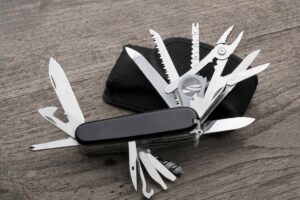
In an emergency situation, having a reliable tool at your disposal can be a matter of life or death. A multi-tool or knife can be used for cutting bandages, opening packages of medical supplies, and can even help with starting a fire. It’s versatility and compact size make it easy to carry, and it can be used in a variety of situations.
Fire Starter
My emergency kit has three things: Waterproof matches, a flint striker, and fire-starting materials. Bigfoot Bushcraft sent me some of their products to try, and I really like them. They make me feel like a mountain woman!
Bear Spray
I’ve camped in areas with black bears my whole life. I don’t feel a need to use bear spray when camping near black bears. But maybe that would give you some piece of mind.
After we left Escalante Grand Staircase, we headed to Yellowstone, the Grand Tetons, and Glacier National Parks. All these parks are homes to grizzly bears. If you camp in areas where grizzly bears live, you WILL want bear spray.
We carried ours on our hip, the whole time we were in bear areas. The canisters are fairly expensive. In most places, you can rent bear spray canisters. Be sure you know how to use it if you need it.
Water Filter or Purification
You may run into a situation where you run out of water for one reason or another. If there is a nearby source of water, it may not be safe to drink.
If you have a water filter, purification device, or purification tablets, you can make the water safe to drink.
One of the easiest ways to purify your water is with a gravity filter. If you don’t have time to wait for gravity to filter your water, the Sawyer Squeeze is a quick way to filter your water.
Rain Gear and Warm Clothing
One thing in this world that is certain, besides death and taxes, is a change in the weather. It’s important to be prepared for any type of weather when camping.
Here in California, it’s not uncommon to have snow in the Sierras, even in the summer. Always be prepared with an extra set of warm clothing and rain gear. Be sure to take it with you when you travel in the car or on a hike.
Flares or Signal Mirror
If you get in a bind, as I did, having a way to signal others can save your life. It’s not a substitute for having a GPS device, but it’s a good backup.
Shelter and Sleeping Gear
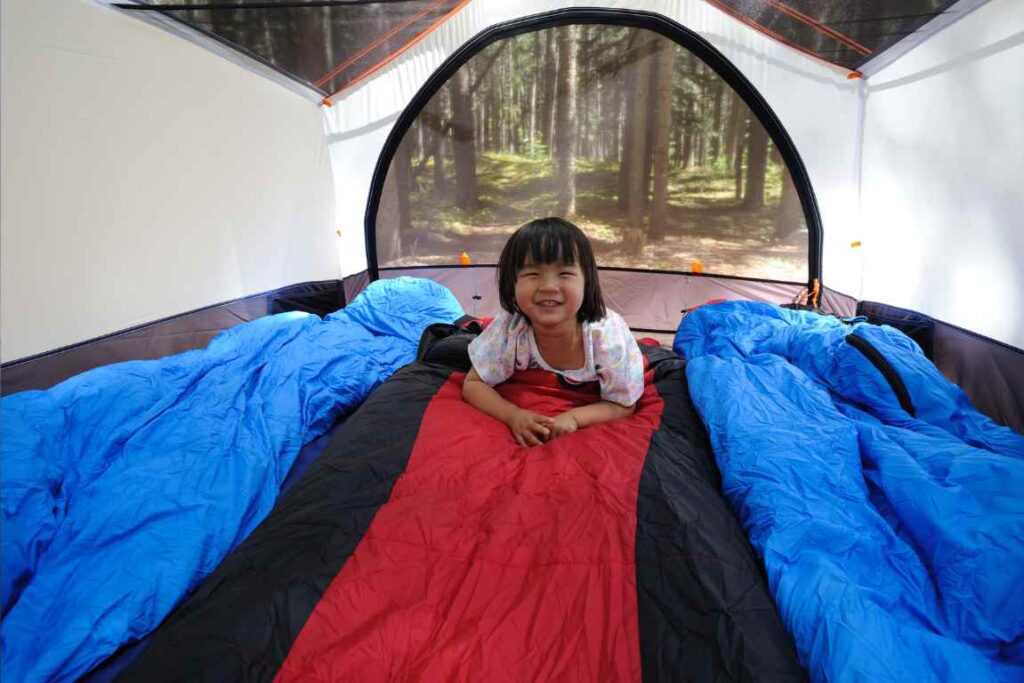
Hypothermia is one of the quickest ways to die. That’s why shelter is so important. If you’re in an RV, you have a leg up. But if you’re in a tent, then you have a little work ahead of you.
If you’re in a tent, choose one that will keep you dry and warm. Recently, we bought the 3-person Gazelle tent. Boy is it quick to set up! When my daughter and her boyfriend saw our tent, they bought the 4-person Gazelle tent. They like it because they can stand up in it.
We agreed that the one thing we don’t like about these tents is how long they are when folded down. That’s something to keep in mind. We knew this when we bought the tent and still bought it anyway.
You’ll also need a sleeping pad and a sleeping bag. Choose a sleeping bag that is appropriate for the lowest temperature possible.
Recently, we bought the Planar diesel heater. This heater will work for either a tent or an RV. The thing cranks out heat! To use it, you’ll need a power source and diesel fuel.
Another option is a Mr. Buddy heater. We used the Mr. Buddy heater for a while before we got the Planar heater.
Navigation and Communication Gear
When I was lost in Escalante Grand Staircase, I didn’t bring a communication device. I also failed to mark my entry point on the navigation software for my phone. You’d better believe I won’t let that happen again.
GPS Device
Everyone has a phone, and a phone can be a great GPS device if you have the appropriate software. I like Gaia GPS. It has a really simple interface. If I had marked my entry point on the Gaia app. I would have been able to navigate myself out of the slot canyons.
Some of my friends use OnX and like it. It’s similar to Gaia GPS. OnX started out as a navigation program for hunters but has since expanded its use.
Of course, there are other GPS devices out there, but that’s just one more thing to carry. Instead, carry an extra battery charger for your phone.
With any software, take the time to learn how to use it before you need it.
Map and Compass
A map and compass don’t require any power. At the very least, carry a paper map of the area where you’ll be camping.
Communication Device
When I was lost in Escalante Grand Staircase, my cell phone didn’t have any signal. Otherwise, I would have just called my husband. At that time, I wished I had a way to contact him.
Satellite Devices
Remember the satellite phone in Jurassic Park? It was this big, bulky phone that probably cost a fortune to use.
Now you can get a satellite signal from your iPhone 14 to send an SOS! It’s crazy how far we have come.
I don’t have an iPhone 14, but we do have a Garmin inReach Mini. Now you can get the Garmin inReach Mini II. It was foolish of me that I didn’t take this on my hike.
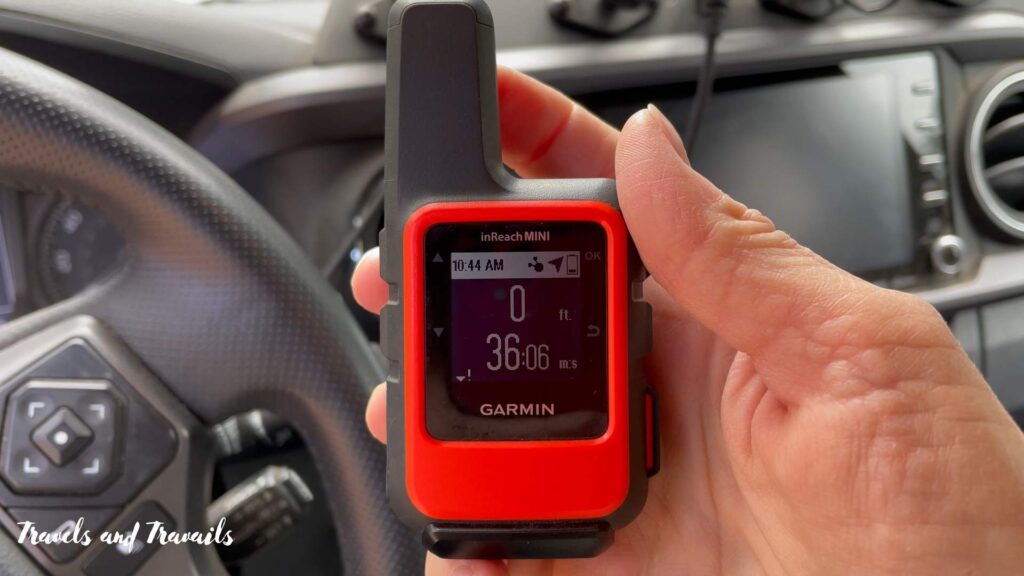
There are other good devices out there as well. I have friends who have used the Spot Device. Do your research to find out what will work best for you.
Radio Devices
In addition, we have two-way radios (walkie-talkies), and a CB radio. Most recently, my husband got his HAM radio license. I don’t have a license, but I can use it in case of emergency.
My point is that you have a lot of options for emergency communications. Choose one that is right for you.
Conclusion
Camping can be an amazing experience, but it’s important to prioritize safety while enjoying the outdoors. By packing the must-have safety gear for camping, you can be confident and prepared for any situation that may arise on your next camping trip.
